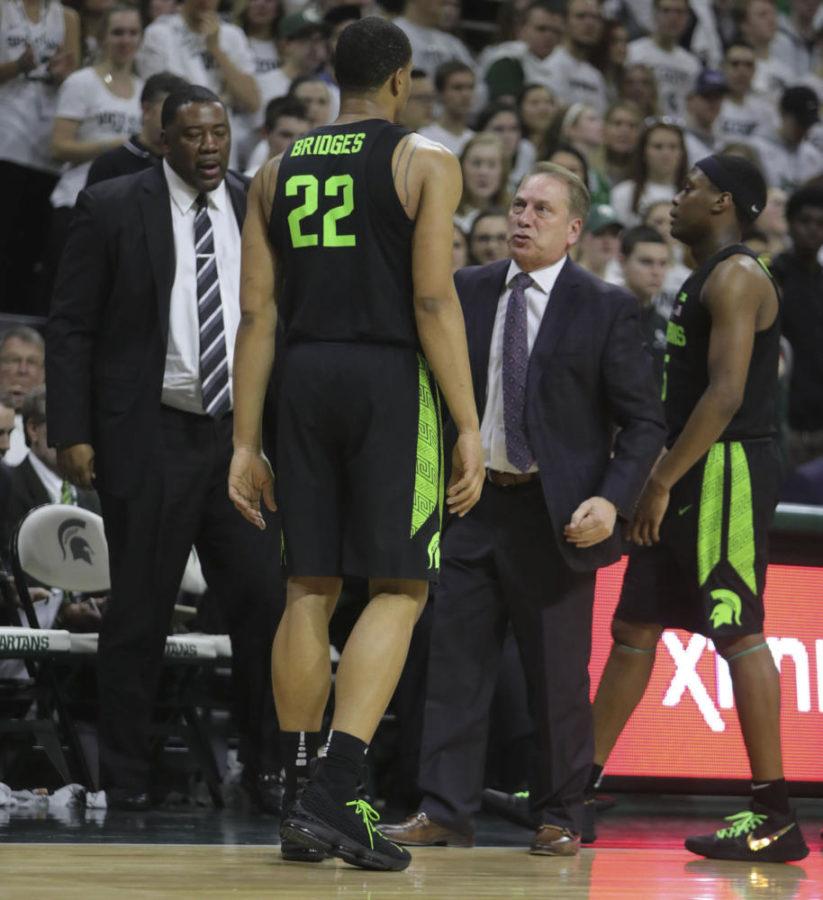In a courtroom in Lansing, Michigan, Wednesday, Jan. 24, a small amount of justice was served. The unfortunate truth of justice is that it’s often preceded by a great deal of pain. In this case, it took the courage of more than 150 women who suffered before the decision was made to sentence former Michigan State gymnastics doctor Larry Nassar to between 40 and 175 years in prison.
“I’ve just signed your death warrant,” Judge Rosemarie Aquilina said in what may seem like a sufficient end to Nassar’s case.
In times past, it was enough to clip a rotted plant’s leaves until it looked pretty again. Times have changed, though, and rotted plants need to be ripped from the root.
Now, the attention of the public has turned to those who enabled Nassar. They find themselves in the disinfecting spotlight of transparency and are trying to wriggle to some dark corner to wait it out.
What happened at Michigan State is not a one-off incident. It doesn’t take much searching to find the gross misconduct of college athletics departments, such as what came to light at Penn State in 2011 or Baylor in 2016. The injustices perpetrated are merely a symptom of a systemic problem in college athletics and America at large.
During the days surrounding the announcement of Nassar’s imprisonment, the entire board of USA Gymnastics resigned at the behest of the United States Olympic Committee. The decision was long overdue and made only after the abuses came into the public consciousness in late 2017 — the Indianapolis Star had reported the story of alleged abuses in 2016.
The full extent to which the powers that be at Michigan State were involved in the dismissal and subsequent cover up of abuses isn’t fully known yet, although the initial reports are damning.
University officials looked to end Title IX Federal investigations on campus in fall 2017. The university also neglected to release or report the full extent of its internal investigation of Nassar to federal investigators. The university’s investigation found Nassar clear of the charges levied against him.
If the Nassar case were an isolated incident, it could simply have been the mistakes and mishandlings of a few. But the federal investigators weren’t on campus for the Nassar case. They were on campus because of the reported mishandling of multiple abuse cases.
“Outside the Lines,” ESPN’s investigative sports journalism show, reported on the case and revealed that MSU officials exhibited a complete lack of action. Sometimes, officials contested the investigation of sexual assaults on campus by members of athletic institutions. Officials at MSU reportedly deleted information from incident reports, persuaded investigating firms against writing incident reports and then refused to release Title IX system reports.
Even Baylor, a private university not required to release Title IX compliance reports, did so when it was revealed they were complicit in covering up alleged rapes by Baylor football players between 2011 and 2014.
The systematic ignoring of abuse on Michigan State’s campus extended past the institution’s highest positions of authority.
In the wake of the scandal, both the university president and the athletic director resigned. University President Lou Ann Simon resigned the same day Nassar was sentenced. A few days later on Friday, Athletic Director Mark Hollis resigned.
Prominent men’s basketball head coach Tom Izzo and football head coach Mark Dantonio find themselves in the midst of the controversy. As of now, there is no direct link between the head coaches and active attempts to hide sexual assault complaints.
The Michigan State football team has had at least 16 players accused of sexual misconduct since Dantonio began his tenure as head coach in 2007. Meanwhile, a member of Izzo’s coaching staff was kept on staff after being convicted of assault on a woman in 2010. A different woman later accused that staff member of sexual assault.
It seems neither coach has plans of stepping down from his position. It may be in the best interest of all those involved if the coaches, new university president and athletic director take some time and think about both head coaches’ futures with the university.
For a university that clearly cares so much about its image, it seems hypocritical not to consider the image it portrays by not, at least, thinking about a complete overhaul.
This, however, isn’t an indictment of the student body or student athletes. It’s wrong and unjust to claim that every person involved in athletics at the university is complicit. Students athletes come and go. The institution heads oversee almost all operations and decisions at universities for years on end.
Don’t take it out on the man or woman with no power. Understand that this issue is because of a rot in positions of power of large organizations. It’s from the roots that flowers grow.
Look at NCAA President Mark Emmert, who apparently knew about the reports of sexual assault by athletes on Michigan State’s campus in 2010 and remained inert. Only now, in 2018, is the NCAA interested in investigating Michigan State.
It’s not just about Michigan State. This kind of systematic abuse can happen anywhere. It’s important to be aware and shine the spotlight in places you don’t necessarily want to. Michigan State operates as an example of how passivity in the highest levels of power can allow for such abuses to occur.
In the end, people make mistakes — and in a situation like this, it’s a lot of people making a lot of mistakes, throwing away human decency in an attempt to protect the image of an institution.


